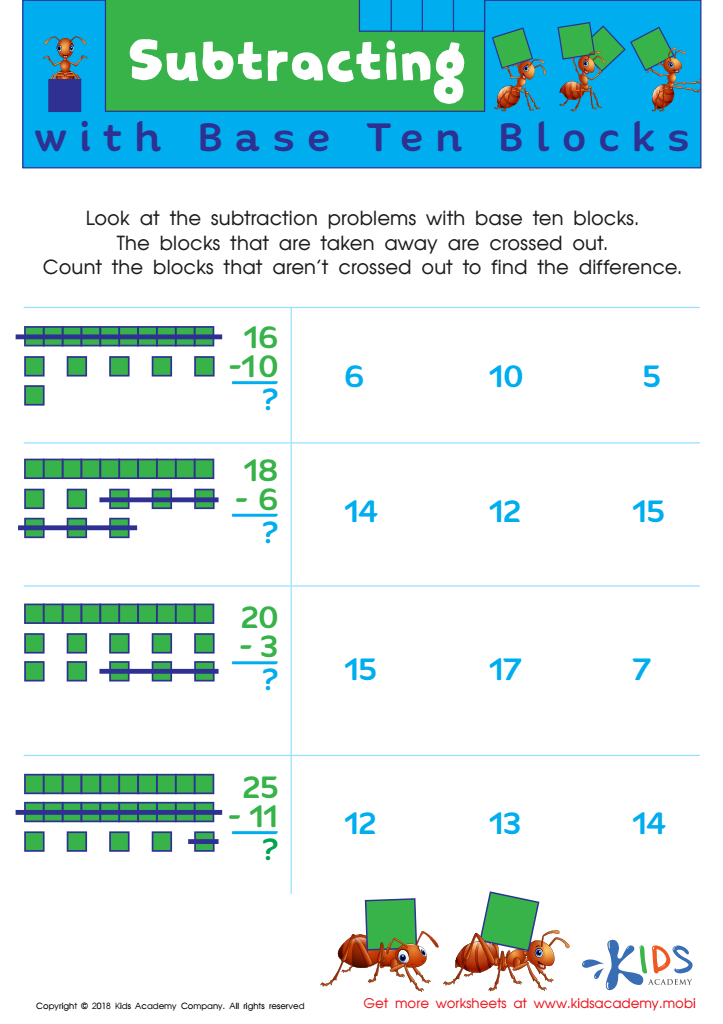Recognizing base blocks Worksheets for Kids
1 filtered results
-
From - To


Subtracting with Base Blocks Worksheet
Question/Answer
Why is the Recognizing base blocks skill important for Grade 1 students?
The Recognizing base blocks skill is crucial for Grade 1 students as it lays the foundation for understanding place value, which is central to arithmetic operations like addition, subtraction, multiplication, and division.
How to test a Grade 1 student’s Recognizing base blocks skills?
To test a Grade 1 student's recognizing base blocks skills, present them with a variety of base ten blocks (units, rods, flats) and ask them to identify and count the number of units each represents.
How does the mastery of the Recognizing base blocks skill affect a student's performance at an early age?
Mastery of the Recognizing base blocks skill at an early age significantly enhances a student's understanding of number concepts, spatial awareness, and pattern recognition. This foundational skill lays the groundwork for more complex mathematical reasoning, problem-solving abilities, and supports the development of early arithmetic skills, thereby positively affecting their academic performance and confidence in mathematics.
 Assign to the classroom
Assign to the classroom












